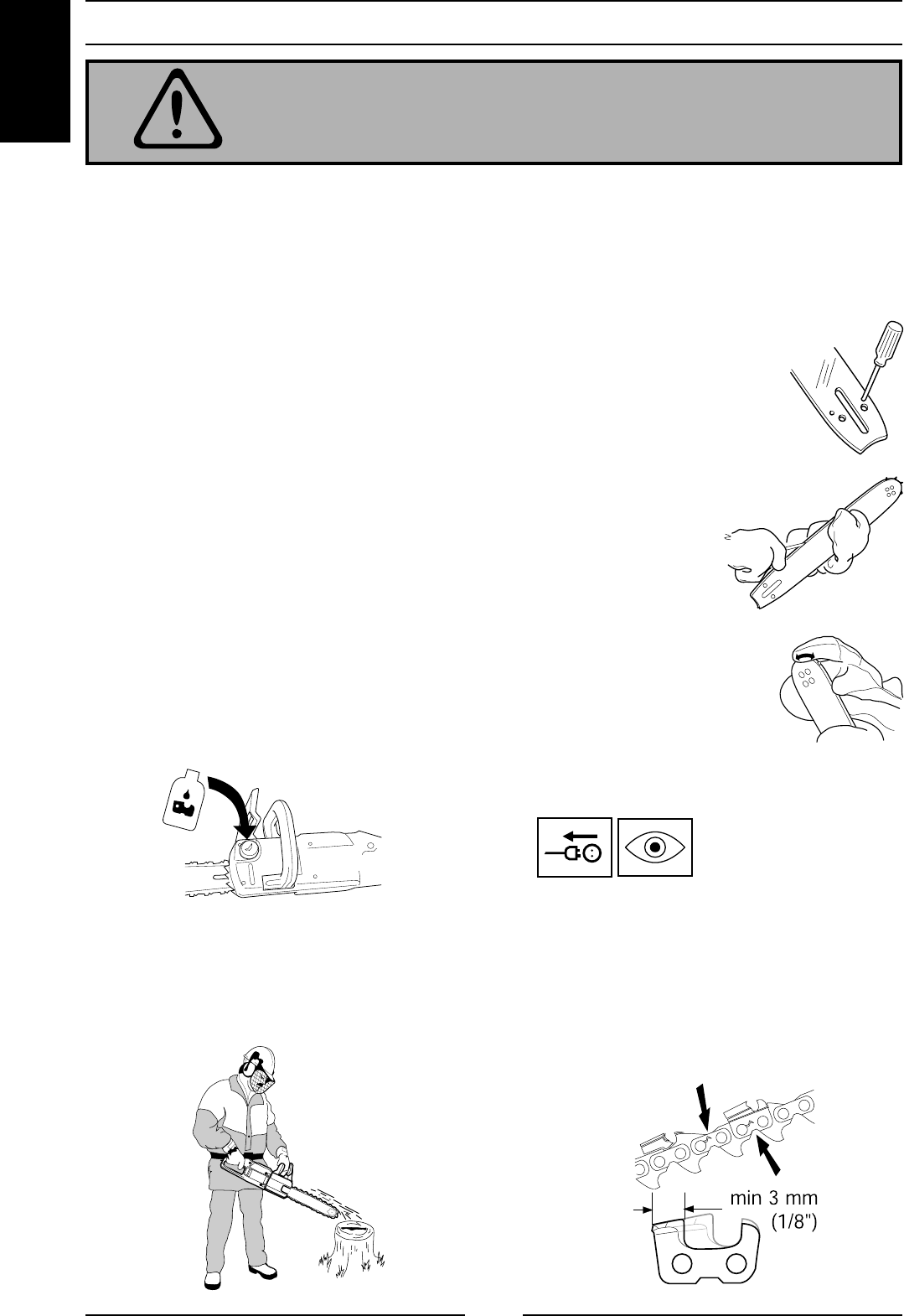
ENGLISH
12
Checking chain wear
• Inspect chain every day for:
- Visible cracks in rivets or links
- Stiffness
- Abnormal wear in rivets or links
- Min. 3 mm (1/8”) horizontal cutter length
- Any deviation on any of these points indicates a worn
chain which must be discarded
- Check the guide bar’s oil passage
and clean if necessary.
- Check guide bar groove and
clean if necessary.
- Ensure that the nose sprocket
turns easily and is not clogged.
Clean and grease if necessary.
Chain oil
• The chain and bar are lubricated by an automatic oiling
system. We recommend using only chain saw oil, which is
formulated for good adhesion and fl ow characteristics in hot
or cold weather. Nonetheless, it is important to use the vis-
cosity appropriate to the season. Oil thickens in subfreezing
temperatures and can overload the oil pump and cause
parts to fail.
• As a manufacturer of chain saws, we have developed an
ideal chain oil which, being based on vegetable oils, is
completely biodegradable. We recommend our oil for the
sake of your chain and guidebar and for the sake of the
environment.
• Where chain oil is not available, EP 90 gear oil may be used.
• If you need help choosing chain oil, contact your service dealer.
• Never use old motor oil! Used motor oil contains impurities
which may be harmful to oil pump, guide bar and chain.
Filling chain oil
• All our chain saw models feature automatic chain l ubrication.
Checking automatic chain lubrication system
• Start the chain saw and point the guide bar towards a fi xed,
light- coloured object at a distance of approximately 20 cm.
After running the saw for a minute, a streak of oil spatter
should be clearly visible on the light surface.
CHAIN AND GUIDE BAR LUBRICATION
CAUTION!
Inadequate lubrication can lead to cutting equipment failure and serious or fatal
personal injury.
• A full reservoir is suffi cient for 20 minutes of steady use.
• If the lubrication system does not seem to be working, and
the following steps do not help, take your saw to a service
dealer.


















